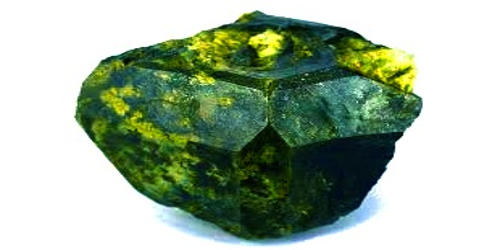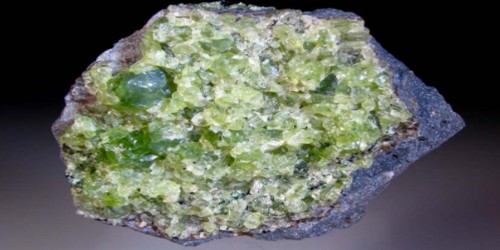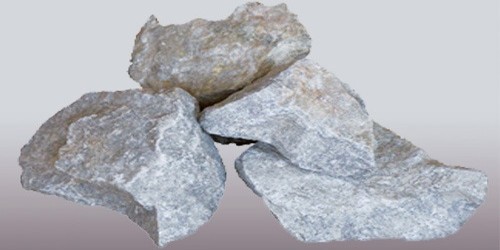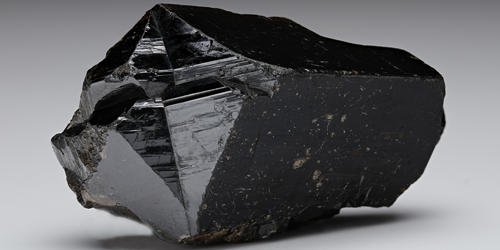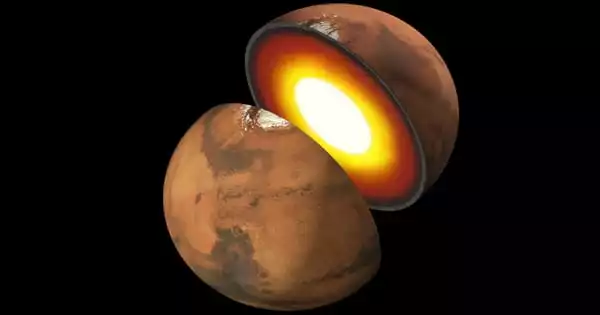Definition –
Caliche (/kəˈliːtʃiː/) is a shallow layer of soil or sediment in which the particles have been cemented together by the precipitation of mineral matter in their interstitial spaces. The cement is usually calcium carbonate; however, cements of magnesium carbonate, gypsum, silica, iron oxide, and a combination of these materials are known.
Caliche is generally light-colored, but can range from white to light pink to reddish-brown, depending on the impurities present. It generally occurs on or near the surface, but can be found in deeper subsoil deposits, as well. Layers vary from a few inches to feet thick, and multiple layers can exist in a single location.
The name “caliche” originates from a Spanish word for porous materials that have been cemented by calcium carbonate. The name is used to refer to a piece of the material or the layer from which it was broken, or the cement itself that binds the materials together. Caliche is known by many other names, the more common of which are calcrete, hardpan, duricrust, and calcic soil.
Caliche is a common feature of arid or semiarid areas throughout the world. In the United States, caliche is a familiar deposit in many parts of the Southwest, especially in Arizona, California, Nevada, New Mexico, and Texas. There, caliche is associated with problems such as poor soil drainage, difficult soil conditions for plant growth, and excavation problems at construction sites. In some locations, there are multiple ancient caliche layers in the subsurface.
In northern Chile and Peru, caliche also refers to mineral deposits that include nitrate salts. Caliche can also refer to various claylike deposits in Mexico and Colombia. In addition, it has been used to describe some forms of quartzite, bauxite, kaolinite, laterite, chalcedony, opal, and soda niter. A similar material, composed of calcium sulfate rather than calcium carbonate, is called gypcrust.
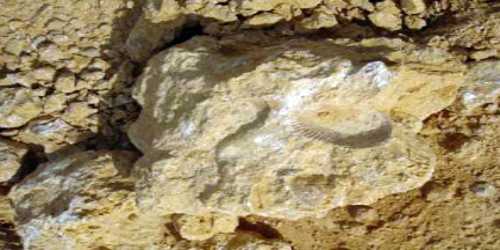
Occurrence and Properties of Caliche –
Caliche occurs worldwide, in aridisol and mollisol soil orders generally in arid or semiarid regions, including in central and western Australia, in the Kalahari Desert, in the High Plains of the western USA, in the Sonoran Desert and Mojave Desert, and in Eastern Saudi Arabia Al-Hasa. Caliche is also known as calcrete or kankar (in India). It belongs to the duricrusts. The term caliche is Spanish and is originally from the Latin calx, meaning lime.
Typical caliche colors are white, gray, brown and reddish-brown. Well-developed caliche can have an appearance that resembles conglomerate, breccia, coquina, or sandstone if the cemented particles are of the proper type and size.
Caliche can be a very hard, dense, heavy, and durable material if it is firmly bound by a cement that completely fills the interstitial voids between the soil or sediment particles. It can also be a weak and friable material if it is poorly cemented.
In excavations and outcrops, a well-developed caliche usually stands out as competent, well-cemented sediment or soil with loose friable material below. Sometimes it is overlain by uncemented surface material. Plant roots might not penetrate a well-developed caliche.
One of the world’s largest deposits of calcrete is in the Makgadikgadi Pans in Botswana, where surface calcretes occur at the location of a now-desiccated prehistoric lake.
Formation of Caliche –
Caliche generally forms when minerals leach from the upper layer of the soil (the A horizon) and accumulate in the next layer (the B horizon), at depths around 3 to 10 feet under the surface. It generally consists of carbonates in semiarid regions in arid regions, less-soluble minerals form caliche layers after all the carbonates have been leached from the soil. The deposited calcium carbonate accumulates first forming grains, then small clumps, then a discernible layer, and finally, a thicker, solid bed. As the caliche layer forms, the layer gradually becomes deeper, and eventually moves into the parent material, which lies under the upper soil horizons.
Caliche can also form beneath vegetation that extracts water from the ground and transpires it into the atmosphere. As large amounts of water are removed by the plants, mineral materials that the plants do not remove become concentrated in the subsurface waters. When the concentration becomes high enough, or evaporation occurs, precipitation begins and can form caliche over time.
While the formation of other caliches is relatively well understood, the origin of Chilean caliche is not known definitively. One possibility is that the deposits were formed when a prehistoric inland sea evaporated. Another theory is that it was deposited due to weathering of the Andes.
In the Atacama Desert in northern Chile, vast deposits of a mixture, also referred to as caliche, are composed of gypsum, sodium chloride and other salts, and sand, associated to salitre (“Chile saltpeter”). Salitre, in turn, is a composite of sodium nitrate (NaNO3) and potassium nitrate (KNO3). Salitre was an important source of export revenue for Chile until World War I, when Europe began to produce both nitrates industrially in large quantities.
These deposits are the largest known natural source of nitrates in the world, containing up to 25% sodium nitrate and 3% potassium nitrate, as well as iodate minerals, sodium chloride, sodium sulfate, and sodium borate (borax). The caliche beds are from 0.2 to 5.0 m thick, and they are mined and refined to produce a variety of products, including sodium nitrate (for agriculture or industry uses), potassium nitrate, sodium sulfate, iodine, and iodine derivatives.
Uses and Problems of Caliche –
Caliche is used in construction worldwide. Its reserves in the Llano Estacado in Texas can be used in the manufacture of Portland cement; the caliche meets the chemical composition requirements and has been used as a principal raw material in Portland cement production in at least one Texas plant. Where the calcium carbonate content is over 80%, caliche can also be fired and used as a source of lime, which can then be used for soil stabilization.
In the United States, caliche is a familiar deposit in many parts of the Southwest, especially in Arizona, California, Nevada, New Mexico, and Texas. There, caliche is associated with problems such as poor soil drainage, difficult soil conditions for plant growth, and excavation problems at construction sites. In some locations there are multiple ancient caliche layers in the subsurface.
In many areas, caliche is also used for road construction, either as a surfacing material, or more commonly, as base material. It is one of the most common road materials used in Southern Africa. Caliche is widely used as a base material when it is locally available and cheap. However, it does not hold up to moisture (rain), and is never used if a hard-rock base material, such as limestone, is available.
Caliche development can incorporate gold, gemstones, and other valuable minerals. Caliche porosity can serve as the deposition site of valuable secondary minerals, including ores of uranium and vanadium, and gem materials such as turquoise and malachite. Caliche deposits are sometimes correlated and used as relative age and stratigraphic markers.
Caliche beds can cause problems for agriculture. First, an impermeable caliche layer prevents water from draining properly, which can keep roots from getting enough oxygen. Salts can also build up in the soil due to the lack of drainage. Both of these situations are detrimental to plant growth. Second, the impermeable nature of caliche beds prevents plant roots from penetrating the bed, which limits the supply of nutrients, water, and space so they cannot develop normally. Third, caliche beds can also cause the surrounding soil to be basic. The basic soil, along with calcium carbonate from the caliche, can prevent plants from getting enough nutrients, especially iron. An iron deficiency makes the youngest leaves turn yellow. Soil saturation above the caliche bed can make the condition worse.
A caliche layer with the presence of calcium carbonates indicates alkaline or high-pH conditions.
Caliche can be somewhat broken up by allowing beneficial weeds which tend to have stronger, deeper roots than garden plants (ergo their weed status) to grow in the garden as companion plants. They can force enough separation of the soil to allow other plants a better chance to breathe, obtain nutrition, and have proper water circulation.
Information Sources:

